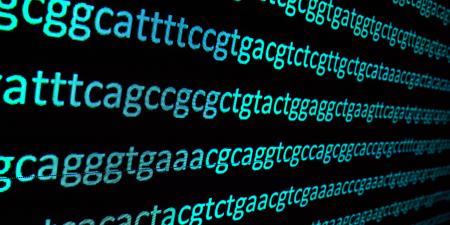Pediatric immunization programs have been one of the most important public health initiatives of the 20th century, with statewide immunization mandates for school and childcare entry playing a key role in their success in the United States. In the year 2000, the US had the highest immunization coverage and the lowest rates of vaccine-preventable disease ever documented.1 In spite of this, the media, the Internet, and antivaccination groups continually stir up parents' fears with unscientific, sensationalized, and biased information linking vaccinations to everything from autism to diabetes. In fact, with disease burdens so low, media-reported rates of adverse events causally or temporally related to vaccination appear more common than the diseases themselves. As a result, vaccination laws have been questioned as an unnecessary affront to parental autonomy. Do vaccination laws have a place in a society that prioritizes personal freedom, especially when the risk of vaccine-preventable disease is so low? Could we see similar vaccination rates with a voluntary system?
History shows that state mandates play a key role in maximizing immunization rates, enabling protection of both individuals and the general population. Successful vaccination programs to some degree shift the policy balance away from personal autonomy and toward social responsibility. Specific exemptions from vaccine requirements ensure peaceful coexistence between the two.
Legally mandated vaccination emerged in the US in the late 19th century during a smallpox epidemic in Massachusetts. The Supreme Court upheld a Massachusetts law in 1905, ruling that state police powers include the right to protect the public against infectious disease by enacting universal vaccination requirements, paving the way for all states to adopt immunization legislation.2 Laws requiring vaccination for school entry were upheld in 1922 by the Supreme Court. Modern childhood immunization initiatives began with efforts to eliminate indigenous transmission of measles in the US in the 1970s3 Schools were major sites of disease transmission, and evidence showed that states with school immunization laws had rates of measles 40-51 percent lower than states without such laws.4 As a result, school vaccination statutes were broadened in the late 1970s and more strictly enforced. Provision of free vaccines and threats of school exclusion without proof of vaccination proved highly successful in eradicating repeated, sustained measles outbreaks. Data from 6 states strictly enforcing comprehensive school laws were compared to data from states without enforcement.5 In the first year, strictly enforcing states had measles rates 50 percent lower than nonenforcers. By the second year, the measles rates in strictly enforcing states was 1/10 that of rates in other states.6 Today, although states clearly have the power and authority to require universal vaccination during disease outbreaks, it is less clear how aggressively they should use that power when disease burdens and risks of infection are low.6
Parents may legally avoid vaccinating their children with personal exemptions. Three types of exemptions exist: medical, religious, and philosophical. All 50 states have adopted medical exemptions for children at significant risk from the vaccination, such as those with compromised immune systems. Religious exemptions exist in 48 states and permit individuals and parents to refuse vaccination on religious grounds. Philosophical exemptions exist in 19 states. These allow parents to refuse vaccinations without a specific religious justification. Of note, religious and philosophical exemptions account for only a small percentage of unvaccinated children. In 1998, the average percentage of children unvaccinated as a result of nonmedical personal exemption was 0.6 percent.7
When coverage rates for certain vaccines reach a high level, (between 85-95 percent depending on the vaccine), resistance to disease spread develops because a large portion of the community is immune, establishing "herd immunity," and allowing limited numbers of nonvaccinated individuals to enjoy relative protection from infection. So, what harm may result from a small measure of parental autonomy in the midst of low disease burden and high immunization coverage in the population? When parents exercise personal exemption and refuse vaccination for their children because of a perceived risk of adverse event or sequelae, they avoid risks of adverse events and take advantage of the partial protection created by herd immunity. If repeated by many, the refusals create vulnerable points of disease transmission and render the larger population more susceptible to contagious diseases that could cause significant morbidity and mortality. Feiken and colleagues studied records in Colorado over an 11-year period to determine whether individual and community risks of measles and pertussis disease increased as a result of religious and philosophical exemptions.8 Their data showed Colorado to have the highest percentage of unvaccinated children due to personal exemption, 0.12 percent medical, 0.19 percent religious, and 1.87 percent philosophical. They found unvaccinated children 3-18 years old were 22 times more likely to acquire measles and 6 times more likely to acquire pertussis than immunized children. In children 3-10 years old, the risks were 60-fold greater for acquiring measles and 16-fold greater for pertussis. Rates of disease in vaccinated children exposed to exemptors increased as well. The annual rates of measles and pertussis among vaccinated children aged 3-18 years positively correlated with the frequency of exemptors, with relative risks of 1.6 and 1.9 respectively. This study confirmed that vaccine refusal poses risks to unvaccinated individuals and the health of the entire population.
No vaccine is 100 percent safe or effective. As vaccination rates go up, reports of vaccine-associated adverse events, both those caused by vaccines (ie, true adverse reactions such as anaphylaxis) and those temporally associated with vaccination by coincidence, increase.9 These reports adversely affect public perception (or misperception) of vaccine safety. Though millions of children have been vaccinated safely, the climate of public discourse about vaccine risk has changed, with fear of adverse events eclipsing fear of disease and many parents coming to view vaccination not as protective but as risky.
In general, we presume parents appropriately exercise surrogate decision making for their children and that they are in a better position than the state to promote the child's best interests.6 The Supreme Court has upheld parental autonomy on several occasions,10-12 although parental authority is by no means absolute. Parental autonomy may be limited by the state's interest in protecting children from harm and neglect. With respect to immunization, the growing fear of the risks of vaccines creates a serious public policy problem. Despite the lack of scientific data establishing a causal link between vaccines and chronic debilitating conditions, the flow of biased information from the Internet and the media has heightened parents' vaccine-safety concerns. If the risks of vaccination are misperceived to exceed the risks of the vaccine-preventable disease, then parents view vaccine laws as forcing them to put their children in harm's way.
A successful childhood vaccination program must respond to both sides of the social equation: parental autonomy and social responsibility. Laws that mandate vaccination for school entry provide the best protection against disease outbreaks for both individuals and the general population. Exemptions offer those with deep personal beliefs a way to exert their parental autonomy. As long as vaccination rates for the general population remain high and the number of exemptors at a minimum, society can tolerate the exemptions. However, the growing antivaccination movement, based on miscommunication and misperception of risk, may threaten the high vaccination rates that protect us all. Pediatricians and family physicians must find a way to enhance the quality of vaccine-risk communication and forge partnerships with parents about childhood vaccination in order to protect the entire population.
References
-
National, state, and urban area vaccination coverage levels among children aged 19-35 months—United States, 1999. Morb Mortal Wkly Rep. 2000:49(26):585-589.
-
Jacobson v Massachusetts, 197 US 11 (1905).
- Jackson CL. State laws on compulsory immunizations in the United States. Public Health Rep. 1969;84(9):787-795.
-
Centers for Disease Control and Prevention. Measles—United States. Morb Mortal Wkly Rep. 1977;26:11-109.
-
Centers for Disease Control and Prevention. Measles and school immunization requirements—United States. Morb Mortal Wkly Rep.1978;27:303-4.
- Ross LF, Aspinwall TJ. Religious exemptions to the immunization statutes: balancing public health and religious freedom. J Law Med Eth. 1997;25(2):202-207.
-
National Vaccine Advisory Committee. Report of the NVAC Working Group on Philosophical Exemptions. In: Minutes of the National Vaccine Advisory Committee, January 13, 1998. Atlanta, GA: National Vaccine Program Office; 1998:1-5.
- Feikin DR, Lezotte DC, Hamman RF, Salmon DA, Chen RT, Hoffman RE. Individual and community risks of measles and pertussis associated with personal exemptions to immunization. JAMA. 2000;284(24):3145-3150.
- Chen RT. Vaccine risks: real, perceived and unknown. Vaccine. 1999;17(Suppl 3):S41-S46.
-
Wisconsin v Yoder, 406 US 205 (1972).
-
Pierce v Society of Sisters, 268 US 510 (1925).
-
Meyer v Nebraska, 262 US 390 (1923).



